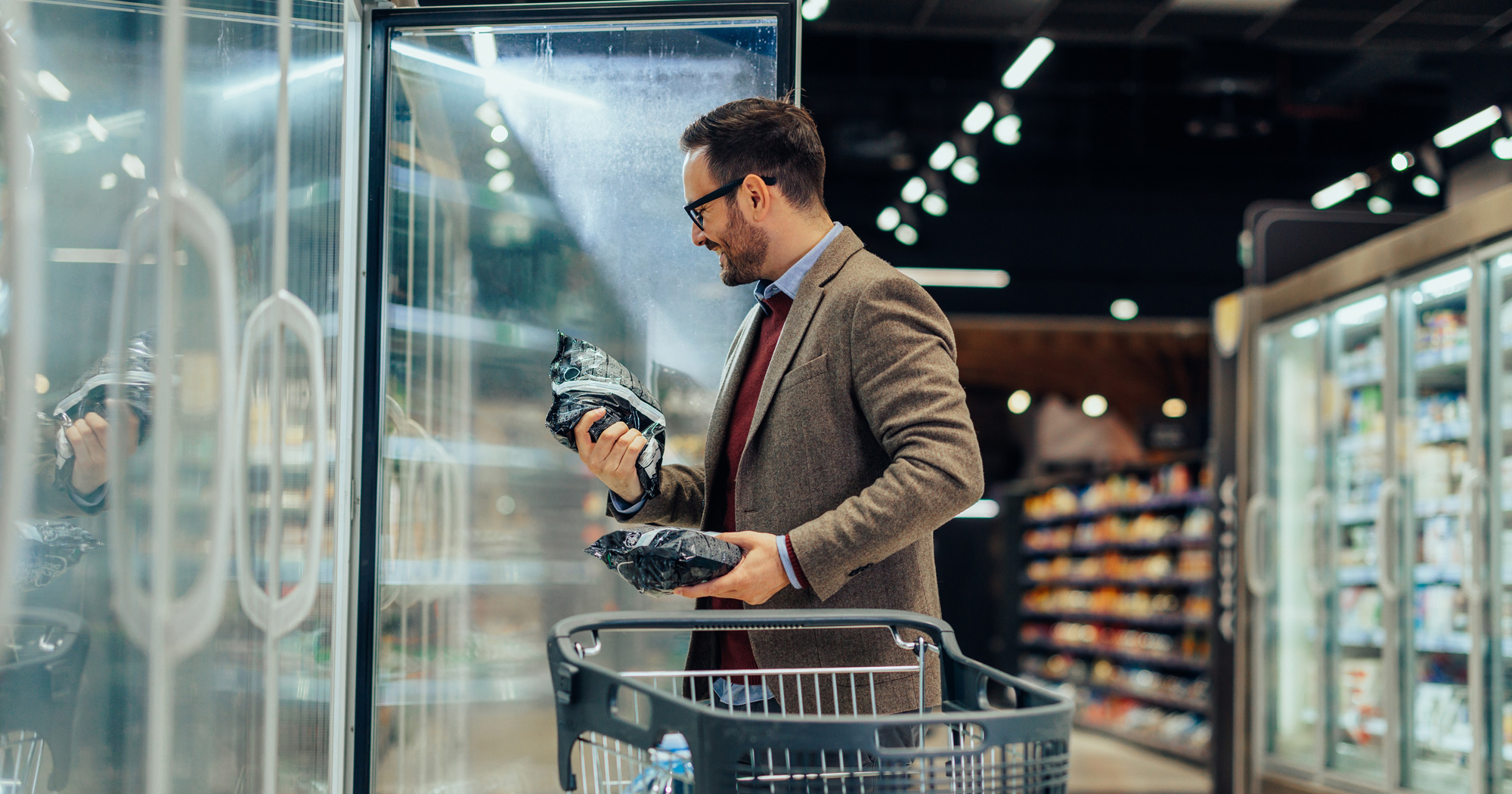Packaging is more than just creating an eye-catching exterior for your product. It’s also about ensuring the contents inside stay secure and fresh for customers. When it comes to frozen food packaging, these factors hold even greater significance. Food and health standards set the bar high for frozen food packaging quality, which needs to strike the right balance between functionality and aesthetics to support safety, convenience, and sustainability for distributors and customers alike.
Folding Cartons in Frozen Food Packaging
Paperboard folding cartons and boxes are among the most popular options for frozen food packaging. The demand for frozen food packaging boxes and cartons is expected to grow by 3.2% annually, reaching a total of $3.1 billion in 2024. That increase can be related to a few factors, including strong product protections, stackability, and the easy customization paperboard frozen food boxes and folding cartons afford manufacturers.
Considerations for Commercial Frozen Food Packaging
1. Food Safety
Food safety is an essential element of frozen food packaging. Substrates and food-grade coatings are necessary to protect products from a wide range of conditions, including moisture, air, leaks, and temperature changes. They also must be durable enough to withstand freeze/thaw cycles and prevent product dehydration and deterioration throughout the shelf life period.
2. Shelf Life
Frozen product packaging should have clear storage instructions including optimal temperature for food preservation. The ingredients in different products can affect storage conditions so it’s essential to tailor instructions accordingly. Materials like paperboard have a high level of insulation and moisture resistance which offers ideal protection for varying temperatures, helping extend product shelf life. To help consumers reduce food waste, these instructions should be easy to find on the packaging.
3. Folding Carton Materials
Frozen food packaging manufacturers often use coated natural kraft (CNK), solid bleached sulfate (SBS), and clay coated newsback (CCN) to create freezer-safe, food-grade folding cartons.
COATED NATURAL KRAFT (CNK) PAPERBOARD
CNK paperboard, sometimes called Solid Unbleached Sulfate (SUS), is a standard option for frozen food boxes due to its moisture- and dust-resistant properties. It’s made from virgin unbleached softwood pulp. Topside, it has a clay coating that produces a matte finish for custom printing and graphics. The backside is typically left uncoated.
SOLID BLEACHED SULFATE (SBS) PAPERBOARD
A premium option, SBS paperboard is manufactured with chemically whitened virgin wood pulp. This treatment leaves the paperboard stiff and glossy, which allows graphics and printing elements to pop. Like CNK, its clay coating creates a barrier that keeps moisture at bay to maintain product integrity.
CLAY COATED NEWSBACK (CCN) PAPERBOARD
CCN is a lightweight sheet made from 100% recycled fiber. The double clay-coated surface allows for high-quality printing and a cleaner running press. The paperboard is available in a range of sizing specifically for freezer applications that decrease moisture absorption and increase the wet strength of the material.
4. Convenience
Convenience is key when it comes to commercial frozen food packaging. Manufacturers, distributors, and customers alike all expect their frozen food boxes to be easily stackable for transport and storage. Ideally, customers may also choose products packaged in frozen food boxes that open and close effortlessly. Paperboard folding cartons and boxes fulfill all of these needs. Their flat surfaces make it easy to stack containers in a fridge, while tear strips and resealable tabs allow consumers to maintain optimal food freshness and easily access content.
5. Branding
Consumers have a lot of choices in the freezer aisle. With a saturated market, brands need to invest in packaging design that catches shoppers’ attention and builds customer loyalty. Whether sitting on store shelves or in a customer’s freezer, custom frozen food packaging must have recognizable branding and graphics from any angle using colors, typography, iconography, and other graphic elements. Paperboard materials effectively use space for branding since they offer a blank surface that can be used for high-quality custom printing.
6. Sustainability
More and more customers are expecting brands to provide their products in sustainable, eco-friendly packaging. Options that limit excess packaging, are recyclable and reduce environmental impact go a long way with today’s consumers. Though CNK and SBS paperboard are recyclable, poly-coated paperboard packaging isn’t. If sustainability is important to your company and end user, consider working with a custom frozen food packaging partner that provides Sustainable Forestry Initiative-compliant materials.
Find Your Solution With MOD-PAC
MOD-PAC works with several brands and private labels to bring their frozen food products to customers across the country. We’re also proud to have FSC Chain of Custody Certificate, SFI® Certified Sourcing Certificate of Registration, and SFI® Chain of Custody Certificate of Registration compliance. If you are looking for frozen food packaging supplies to help you launch your product, we’re the team to turn to. Give us a call today to learn more.


